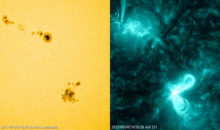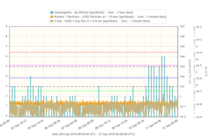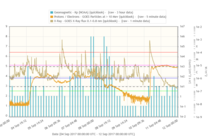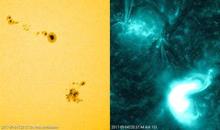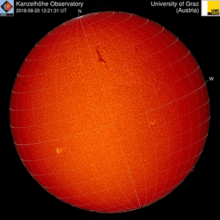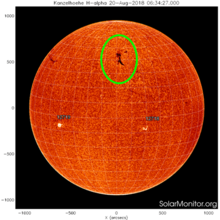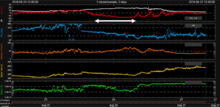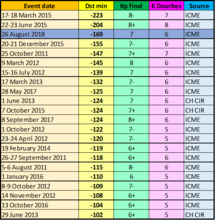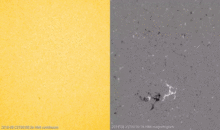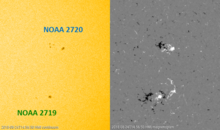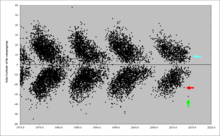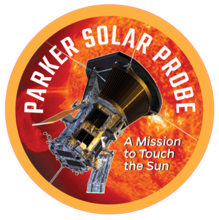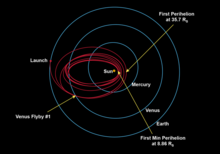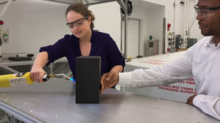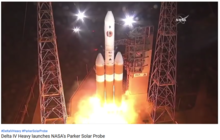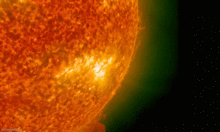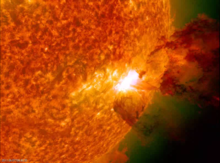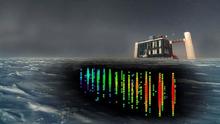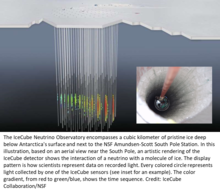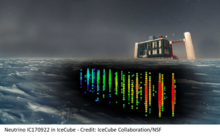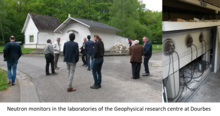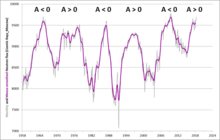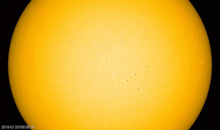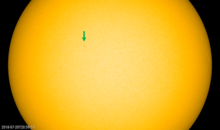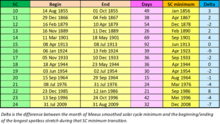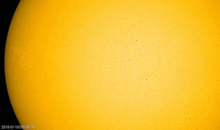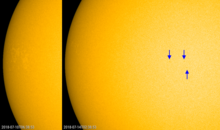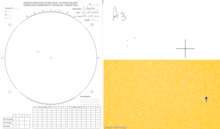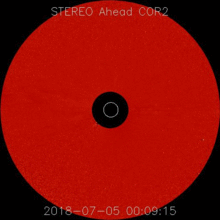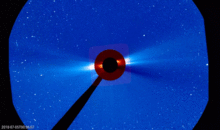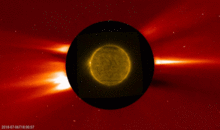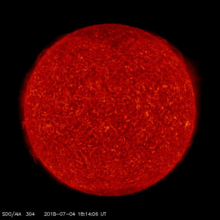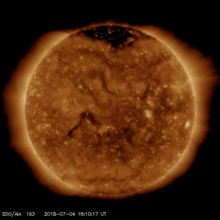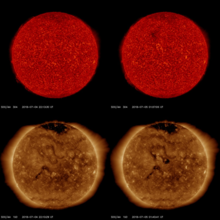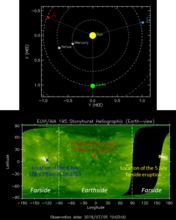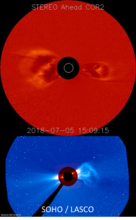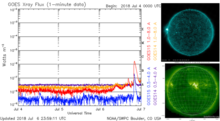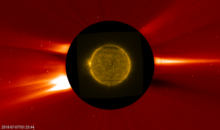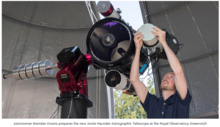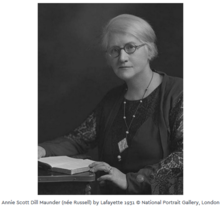news
Submitted on 2018-09-12
Just one year ago, sunspot group NOAA 2673 was the source of a surge in solar activity. The complex region set numerous records for this solar cycle, and was responsible for some important space weather effects.
Submitted on 2018-08-28
A strong geomagnetic storm that was observed on 26 August turns out to be the third strongest of the ongoing solar cycle.
Submitted on 2018-08-28
Despite its reversed magnetic polarity, sunspot group NOAA 2720 still belongs to the old and ongoing solar cycle 24.
Submitted on 2018-08-13
On 12 August, the Parker Solar Probe (PSP) was launched from Cape Canaveral, Florida. Its main science goals are to trace the flow of energy and understand the heating of the solar corona and to explore what accelerates the solar wind.
Submitted on 2018-08-07
In preparation for the Open Door days at the Space Pole on 29 and 30 September, a movie has been created with some of the most spectacular solar eruptions that occurred during solar cycle 24.
Submitted on 2018-08-01
An international team of scientists has found the first evidence of a source of high-energy cosmic neutrinos, pointing to a long-sought cosmic ray accelerator. Meanwhile, neutron counts from cosmic rays are on the rise again.
Submitted on 2018-07-24
A small sunspot observed on 21 July may end the currently longest interval without sunspots observed so far during this solar cycle transition.
Submitted on 2018-07-16
Some sunspots tried to develop in a relatively large faculae field.
Submitted on 2018-07-10
Some of last week's observed coronal mass ejections (CMEs) had an interesting story to tell.
Submitted on 2018-07-04
The Royal Observatory of Greenwich has installed four new state-of-the-art telescopes (AMAT), destined for both researchers and the broad public.
Pages
Zircon - This is a contributing Drupal Theme
Design by
WeebPal.

